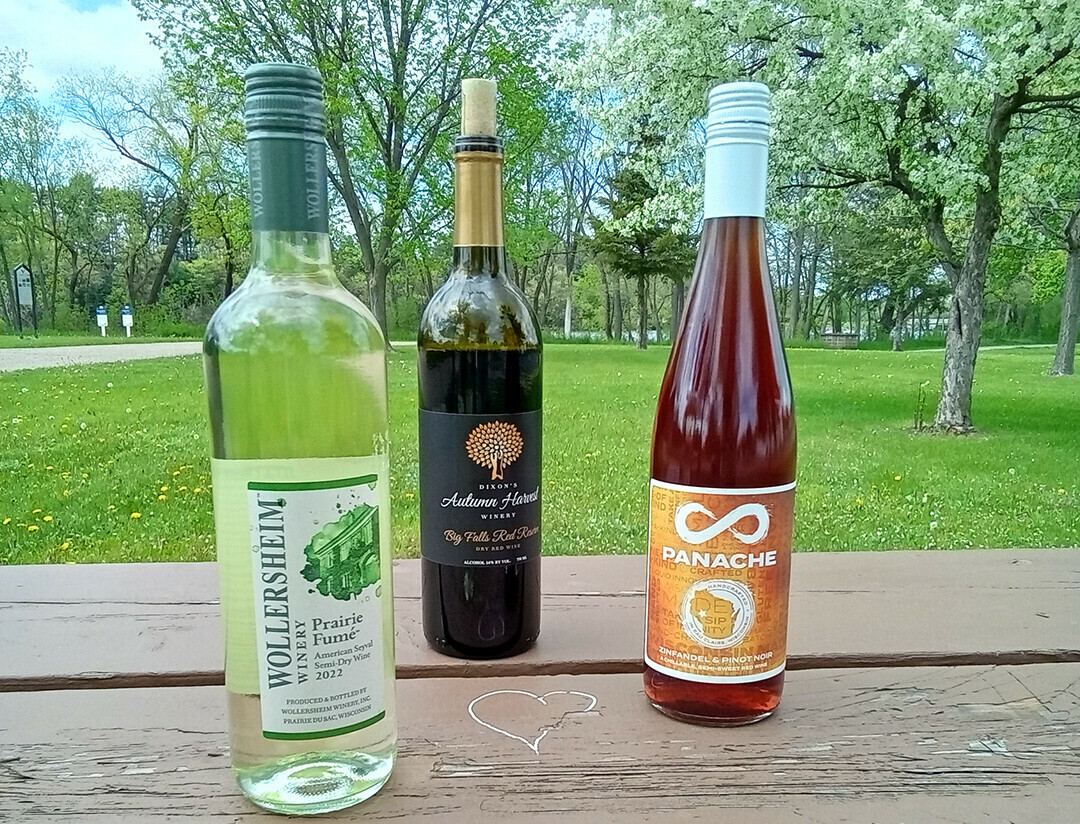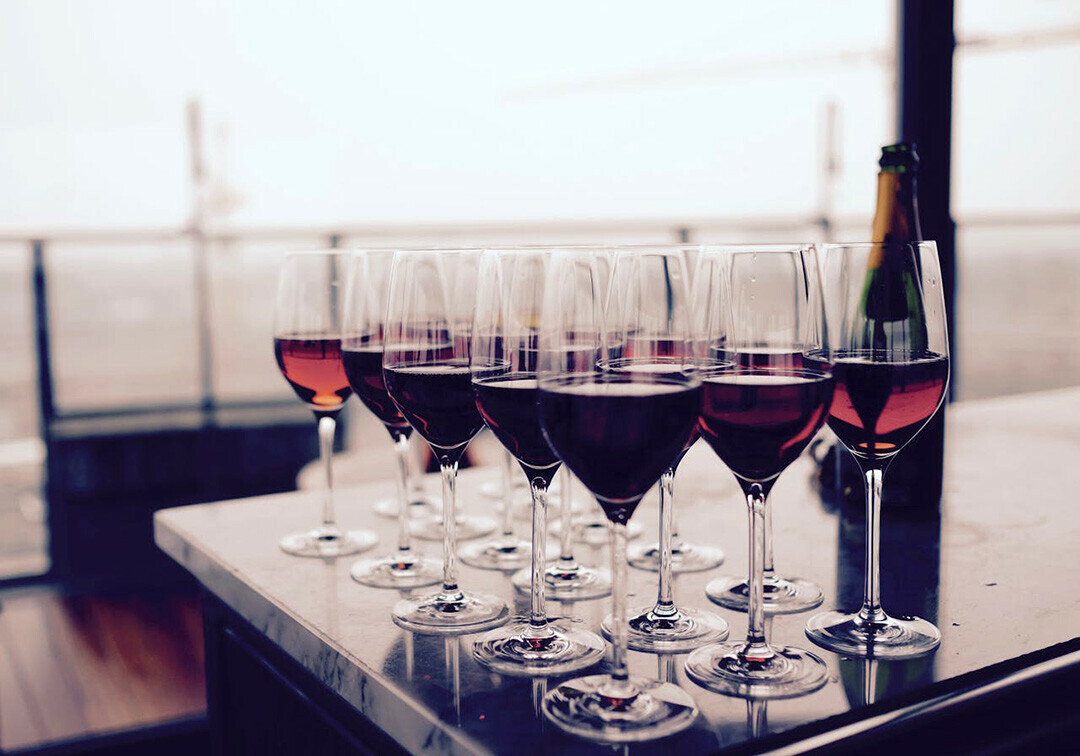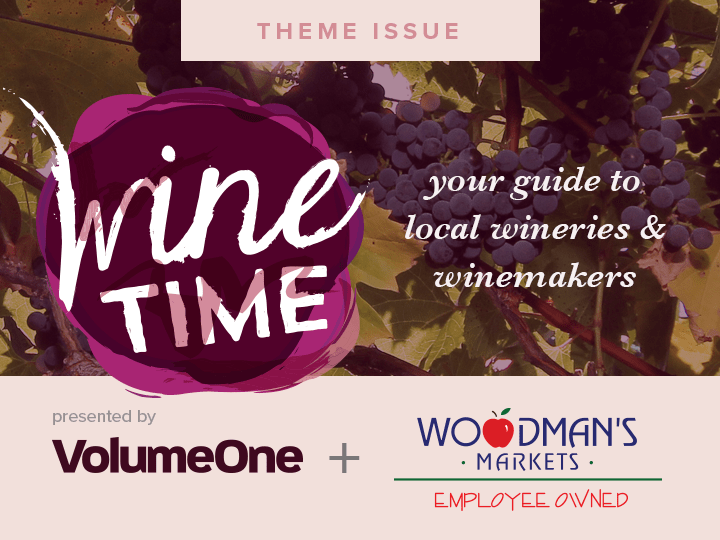‘Top Chef: Wisconsin’ Inspires Wine Lover to Attempt Brat Pairings
finding Wisco vintages that match our much-loved sausages
words & photos by Michelle Nystrom

I was thrilled when one of my favorite cooking competition shows, Top Chef, was filmed in Wisconsin this year! Finally, a chance to show the rest of the country how great our state is. One of the episodes featured the chefs competing at American Family Field in Milwaukee using the five mascot sausages: hot dogs, Italian, Polish, bratwurst, and chorizo. I was amazed at how they managed to combine out-of-the-ordinary ingredients into a delicious dish that worked. It reminded me of the Kohler Food and Wine Experience I attended years ago, where chef Graham Elliott from Chicago cooked a risotto with pearl onions and added chunks of Sheboygan bratwurst, then matched it with a Bison Blonde Lager. It was perfection!
Being that there are over 80 wineries in Wisconsin, I began to wonder if Wisconsin oenophiles could enjoy a glass of wine with sausages, too? So I decided to explore wines that could possibly pair with bratwursts, and maybe another summer favorite, potato salad? Yup. If those chefs can do it, maybe I can, too! So off to the store I went. I wanted to be sure to utilize local ingredients as well. Having traveled worldwide, I learned that it’s best to consume the local food and beverage together, as they come from the same soil.
The rule of thumb is that white wines go with lighter foods like fish or chicken, and reds fare better with heavier foods such as meat and earthier dishes. There is also that wiggle room in between where something matches that ordinarily wouldn’t.
I ended up deciding on bacon cheddar, original, and green onion brats, then grabbed a pint of original potato salad. Next, I chose a mix of Wisconsin-made wines: River Bend Winery’s Rosé from the Sangiovese grape, Dixon’s Autumn Harvest Big Falls Reserve, Wollersheim’s Prairie Fume, and Infinity’s Panache Zinfandel & Pinot Noir. Usually when I’m evaluating wine pairings I try to match the weight and intensity of the wine with the weight and intensity of the food. The rule of thumb is that white wines go with lighter foods like fish or chicken, and reds fare better with heavier foods such as meat and earthier dishes. There is also that wiggle room in between where something matches that ordinarily wouldn’t. Ultimately, though, it’s all subjective to the individual palate and what you yourself enjoy.
So after boiling the brats and grilling them, I took a bite of each brat then took turns sampling each wine. Eventually, what fit together was the green onion brat and the Big Falls Reserve, which is an intense and aromatic full-bodied red. And to my surprise, the bacon cheddar brat not only matched the Big Falls Reserve, but also balanced out the Panache Zinfandel & Pinot Noir’s lighter and fruitier flavors. The original bratwurst, of course, went with the Prairie Fume. At last, I dug into the potato salad and judiciously sipped each wine with that. The Panache Zinfandel & Pinot Noir was also an excellent compliment to the onion, mustard and celery flavors!
In the end I found it compelling how unusual pairings can work if you just use some imagination and take a chance! So be your own Top Chef this summer! Mix, match, and enjoy!
TONGUES AND WINE?
While out with my girlfriends last weekend, we visited the 2 Roots Art & Wine Gallery in Eau Claire. I was most impressed to see that they had a wide variety of stemware available – rightfully so. However, I noticed many of the guests were still using the same glass when sampling several different wines. As far as I’m concerned, they were cheating themselves out of the true experience of the wine they chose! Were they not aware that most stemware manufacturers deliberately shape their wine glasses to gently direct the wine to a specific area on the tongue? It intentionally enhances the taste of the individual grape variety.
Being that the tongue can detect four main tastes – sweet, sour, salty, and bitter – they’ve designed a Chardonnay glass to be wider at the rim so when the wine flows into your mouth it will naturally gravitate toward the sides of your tongue where the saltiness and sourness taste buds are located. This way the natural acidity and flavors can be enjoyed the way they are meant to be. You can taste the toast and malolactic tones of the Chardonnay perfectly.
If you let the wine sit in your mouth for a period of time (three seconds or so) and allow the tongue’s receptors to come into contact with the chemicals in the wine it releases the perception of flavor into the nasal cavity. The experience is intense and exciting! If you close your eyes while doing this, you will see what I mean. It brings a whole new appreciation to the taste, texture, and aromas of wine. So when you see all those movies showing wine snobs swirling their wine, sniffing it, and swooshing it around in their mouth – know there’s something to that after all!

Now, ask yourself, is the wine taste balanced, too acidic, too alcoholic, too tannic? Amazingly, the tongue will tell you all of this if you just let it. It can actually “touch” or “feel” the wine and perceive its texture. With that, you will notice red wines tend to taste “dryer” because of the tannins. It will give you a cottonmouth or puckery sensation, right? Whereas some white wine grapes retain their sugars more, having a sweeter impact. Meanwhile, higher alcohol wine will have a burning sensation.
Did you know you can even train your tongue to identify certain flavors? Start out by taking a moderate sip of wine and let it coat your tongue. Make an effort to identify characteristics such as herbs, spices, or fruits. For instance, you’ll find Sauvignon Blancs have a distinct pear, peach or grapefruit flavor. Getting more complex, I have even tasted distinct flavors of “dirt” and “wet stone” in more earthy, bolder wines like Sangiovese, Tempranillo, and Pomerol. Experiment and take your time. Listen to your taste buds. Develop and build your own personal palate.
Once you start to train to your tongue and differentiate between the many unique qualities of wine, partner the wine with the stemware specially made for that specific grape variety. You may just find yourself becoming a Wine Snob!
Michelle Nystrom of Eau Claire is a certified wine professional who loves to share her own wine and travel experiences.


